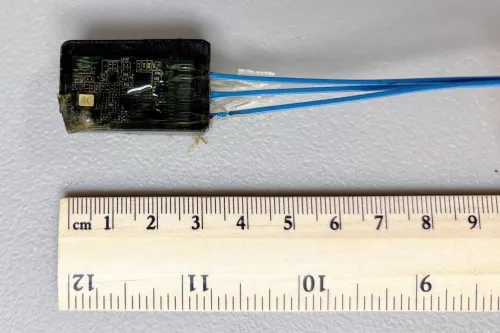Outside the classroom, students create future businesses

At a recent meeting of the 23-year-old MIT Entrepreneurs Club, one recent graduate of the Sloan School of Management described his plans for a business — one based on his solution to a little-recognized problem that currently costs airlines $10 billion a year. Another alumnus, an engineer who recently retired after a career in the telecom business, talked about his patented approach to fighting wildfires in remote locations. A new MIT graduate student, who just earned his undergraduate degree from the Institute this spring, spoke of three different startup businesses he’s currently cultivating in his spare time — one of which he co-founded during his freshman year at the Institute.
In short, just another typical week at the E-Club.
The E-Club is just one of a variety of organizations at MIT dedicated to fostering new businesses based on ideas that emerge from classrooms, labs and late-night brainstorming sessions. And that’s on top of the many competitions and dozens of venture-oriented classes, services and centers dedicated to helping members of the MIT community turn their ideas into viable businesses.
The results of all this entrepreneurial ferment are staggering: MIT alumni and faculty start more than 200 new companies every year, according to the MIT Venture Mentoring Service; as a group, they’ve founded thousands of companies ranging from huge, well-known firms such as Hewlett-Packard, Bose and Intel, to rising companies including A123 Systems, Zipcar and Dropbox. Collectively, these firms have created millions of jobs. They also generate about $2 trillion a year in revenues, according to a 2009 study.
“It’s in the DNA,” says William Aulet, senior lecturer in MIT’s Sloan School and director of the MIT Entrepreneurship Center, which aims to help students develop the skills they’ll need to start companies. From the time of its founding, he says, MIT’s “mens et manus” (“mind and hand”) philosophy of hands-on education has always fostered the kind of roll-up-your-sleeves attitude essential for an entrepreneur.
Sowing the seeds
MIT also has a long tradition of multidisciplinary collaborations, Aulet says, and the close physical proximity and ease of cross-registration in different schools — for example, engineering students taking business classes — help foster the kinds of collaborations that often lead to a strong founding team for a new business.
“The physical layout really promotes cross-campus collaborations,” he says. He cites as an example the new location of the Entrepreneurship Center — where students can meet and plan during the formative stages of their new ventures — which is midway between Sloan and the Media Lab.
MIT has “a very pragmatic culture,” says Leon Sandler, executive director of MIT’s Deshpande Center for Technological Innovations. “It’s very much about solving problems, engineering solutions to things.”
More than 100 representatives of other universities have asked Sandler to explain MIT’s secret to success, he says. “We’re not striving to be unique,” he says, and yet, “we’re able to commercialize an amazing amount of technology, by whatever metric you choose.”
“I talk to people at other universities that have a similar size of research budget, and they might spin out one company a year,” Sandler adds. By contrast, MIT’s Technology Licensing Office — which commercializes technology for which the Institute has obtained patents — licenses new technologies to companies about once every two weeks.
Students have ample opportunities to learn about these past success stories. Just last weekend, the second annual “Startup Bootcamp” featured 10 leaders of successful startups, some of which came out of MIT. A week earlier, a new three-day workshop called “t=0” was held on campus, providing a hands-on opportunity for students to form teams and brainstorm new business ideas with the help of successful alumni-entrepreneurs including Mitch Kapor GM ’81, the founder of Lotus Development (now part of IBM).
And the resources available to would-be entrepreneurs don’t stop at graduation: One of the oldest organizations aimed at fostering entrepreneurship is the alumni-founded and led MIT Enterprise Forum, started in 1978, which now has 28 branches around the world that hold workshops and networking events.
From the ground up
But while the hands-on educational approach and a history of successful launches is now ingrained in the Institute’s culture, it wasn’t always recognized and fostered to the degree it is now, says Joost Bonsen ’90, SM ’06. For example, the student-run $100K Business Plan Competition started in 1989 as a $10K contest, which Bonsen managed from 1993 to 1995. It was a harder sell then, he explains, because “we didn’t have any success stories yet, and there wasn’t this visibility for entrepreneurship” that exists today.
Now, the contest can boast having helped launch more than a dozen companies that have grown to values of more than $100 million, and at least two that are now worth greater than $1 billion.
Helping to provide the mentorship, advice and resources students need to launch a company is “what we’re all about,” says Kourosh Kaghazian, a Sloan MBA student and executive director of this year’s $100K Competition. The three-part competition, he says, “encourages students who might have an idea, a technology that might be commercialized, to find out, ‘How do you go about thinking this thing through?’”
A big part of the contest’s success, Kaghazian says, lies in the resources and connections it provides: Students are paired with mentors, usually venture capitalists or established entrepreneurs, who can provide guidance in the early stages of figuring out a plan, helping them “get ready to go out into the real world.”
Mechanical engineering graduate student Josh Siegel ’11, president of the MIT Entrepreneurs Club, agrees that a key element to Institute-wide success in creating companies is the relationships people build through both classes and the many clubs and competitions devoted to entrepreneurship. In his club, for example, Siegel says the emphasis is on hearing from people in the midst of grappling with the financial, organizational, interpersonal and legal issues involved in getting a company up and running.
“We give you the nitty-gritty,” he says. “It’s a club for people who are very hands-on, who want to do it themselves, make mistakes, and keep struggling until they succeed. We turn away people who are looking for a get-rich-quick scheme.”
When cars fly
But for those with real ideas, these clubs can make all the difference. Richard Shyduroff, who co-founded the Entrepreneurs Club in 1988 and teaches a seminar on Technology Startups, cites one example from recent years: A student from the Department of Aeronautics and Astronautics came to the club and pitched a crazy-sounding idea centered around a flying car, or road-worthy airplane.
But by the next day, Shyduroff had talked to another alumnus and E-Club regular who ended up providing seed funding. That idea has now become a company called Terrafugia, which has raised millions of dollars in funding, has dozens of advance orders, and just received National Highway Traffic Safety Administration approval for its vehicles.
“Those are the kinds of meetings we live for,” Shyduroff says proudly.
Subscribe to our newsletter
Stay updated with the latest insights and events with our quarterly newsletter.


